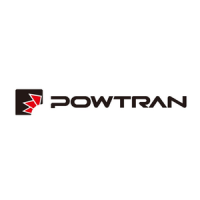Section VI. Function Parameter Description
current. If the value set to 0, no slip compensation functions.
This function is based on correctly setting b01 motor’s rated current, b05
motor’s current without load.
The calculating form is:
Compensate frequency=Slip compensate × Rated frequency
× (I
MX
– I
M0
) / (I
MN
– I
M0
)
I
MX
: Motor actual working current
I
MN
: Motor rated current
I
M0
: Motor current without load
F12: Output voltage percentage factory setting: 100%
Percentage of actual output voltage and rated output voltage
This parameter is for adjusting output voltage, output voltage=inverter rated
output voltage × output voltage percentage.
F13: Maximum frequency factory setting: 50.00/500.0Hz
Allowable maximum frequency by Inverter’s adjusting speed, also the base
for setting acceleration/deceleration time.
Setting this parameter should consider the characteristic and ability of
motor.
F14: Basic frequency factory setting: 50.00/500.0Hz
This function is for motors with different base frequency.
Basic V/F feature curve:
Fout
Un
base
frequency
maximum
frequency
Vout
F15: Carrier frequency factory setting: refer to following table
This function is chiefly used to improve the possible noise and vibration
during the operation of frequency converter. When carrier frequency is
higher, the output current has better wave, the torque is great at lower
frequency and the motor produces light noise. So it is very suitable for use
in the applications where great torque is output at low frequency quietly. But
in these applications, the damage to the switches of main components and
the heat generated by the inverter are great, the efficiency is decreased and
Section VI. Function Parameter Description
the output capacity is reduced. At the same time, more serious radio
interference is resulted and special attention must be paid for application
where very low EMI is needed, and filter option can be used if necessary.
Another problem for application of high carrier frequency is the increase of
capacitance-leakage current. The protector for leakage current may
invalidate function, and over current is also possibly caused.
When low carrier frequency is applied, the case is almost contrary to the
above-mentioned one.
Different motor has different reflection to the carrier frequency. The best
carrier frequency is gained after regulation according to actual conditions.
The higher the motor capacity is, the lower the carrier frequency should be
selected.
The company reserves the right to limit maximum carrier frequency as
following:
Carrier
frequency
Motor noise
Electric
disturbance
Switch
dissipation
1.0kHz
8.0kHz
16.0kHz
Great
↕
Small
Small
↕
Great
Small
↕
Great
The relation between carrier frequency and the power is expressed as
following:
Power
(kW)
0.4~18.5
22~30
37~55
75~110
132~200
220 above
(including 220)
Carrier
frequency (Hz)
8.0k 7.0k 4.0k 3.6k 3.0k 2.5k
Note: The higher carrier frequency causes the higher converter heat.
F16: Lower limit frequency factory setting: 0.00/0.0Hz
Lower limit of output frequency.
F17: Upper limit frequency factory setting: 50.00/500.0Hz
Upper limit of output frequency.
When the frequency setting command is greater than upper limit, the
operation frequency is the upper limit. When the frequency setting
command is below the lower limit, the operation frequency is the lower limit.
When starting the standstill motor, the frequency converter’s output is
accelerated towards the lower limit or set value from 0Hz according to the
acceleration time 1. When the motor stops, the running frequency starts to
decelerate towards 0Hz according to the deceleration time.

